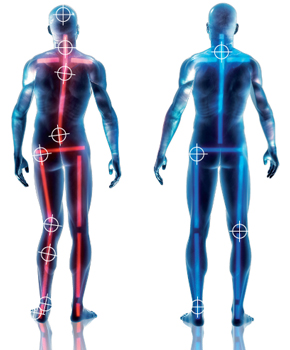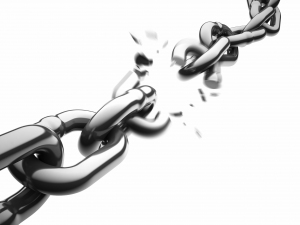Back pain, shoulder pain, knee pain, aches and injuries. Sound Familiar? Do you find yourself spending more time recovering than you do in the gym?
Many tend to think that its part of lifting weights and what comes with training. Truth is, that’s not always the case. While some soreness and aches are normal and expected with this sport, repetitive cases of injuries and constant pain can be a cause of something else, something keeping you from reaching your goals, something often known yet seldom addressed.
The human body is designed to be mobile. Mobility and Efficient mobility are two completely different things. The ability of the body to move “efficiently” requires an appropriate balance of stability and mobility. Movement efficiency involves a synergistic approach between stability and mobility throughout the body. Any disruption (be it due to genetic make-up, weakness or imbalance) in the body causes a ripple effect along the chain.
For Example, if the hips, trunk and shoulder are stable, it facilitates better mobility of the legs and arms without any compensation from the surrounding joints.
The image below shows the functions of different segments (Joints) in our body:
____________________________________________________________________________________________________________________________________
The Kinetic Chain
The human body is connected from top to bottom. That link is known as the “Kinetic Chain” ranging between joints that favor mobility and others favoring stability. Think of it as an orchestra. Everything needs to be in sync to produce a sound harmony. The smallest disruption in the harmony will sound off.
While all joints show some level of mobility and stability, they tend to favor one over the other.
More often than none, nagging pain in one point is usually a by-product of a broken link (or disruption) somewhere else in the kinetic chain.
Take the knee for example; Knee pain may be brought on by ankle stiffness, foot pronation/supination (unnatural rotation of the foot), pelvic tilt etc.

A pronated foot will effect posture and center of gravity all the way to the top of the chain leading to incorrect joint loading eventually leading to injuries
So as you can see, even though there is nothing particularly wrong with the knee itself, its due to a weakness / imbalance along the chain that causes the body to alter the original function of the knee-joint to compensate causing pain.
______________________________________________________________________________________________
Here’s another example. This one is caused by poor posture. Having a desk job is associated with long hours of sitting. This causes your hips to become tight and less mobile (refer to the diagram above to see function of hip-joint). This forces the lower back and the knee, which function as stabilizing joints to be mobile and this causes pain and potential injury.
You may be able to get by with an imbalance for a while. Do It long enough though without correcting it will lead to inhibiting of the concerned muscle leading to overloading and over use of the wrong joints and muscles. Before you know it, you’ll be at the doctors with an injury. Think of it as trying to make your car go faster with the emergency brake on. You eventually will, but not without ripping it up in the process.
The reasons this happens in the first place are many, they may be due to:
– Repetitive motion (lifestyle)
– Awkward position
– Side-dominance
– Poor exercise technique and inefficient muscle prioritization
– Structural deviations
– Previous injuries
This can also be brought on by neglecting muscle groups so picking a well-balanced program is key.
Most injuries are treatable but will re-occur over and over if not corrected. Some cases, left long enough will require corrective surgery.
In part II, I will cover ways in which you can protect yourself from injury as well as some corrective exercises for the most common imbalances and weak muscles.
Don’t 4get to like and comment 🙂








Pingback: The Silent Killer « The Fitness Grail
Pingback: Advanced Training Technique Series – Intro « The Fitness Grail
Pingback: You really shouldn’t Deadlift? Say what?! Read to find out why… « The Fitness Grail
this has been vary helpful. I suffer from a range of problems with my mobility due to a knee injury sufferd in the Army now i am almost completly disabled because of several joints failing. I now need to better understand the connection between my healh and the kinetic chain so that i can explain to the doctors the best way to treat me.
Hi Jake,
Thank you for the kind words. Yes i strongly recommend to educate yourself and direct the doctors. At the end of the day, only you know exactly what you are feeling and need to get them to think out of the books and common protocols